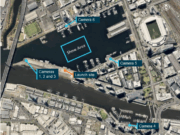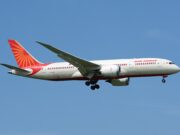
The United States has an historic opportunity to influence the safe integration of civil unmanned aircraft systems (UAS) into its National Airspace System (NAS) by implementing a safety management system (SMS) for UAS operators now — before the full UAS integration into the NAS. We also recommend adoption of the term remotely operated aircraft to replace unmanned aerial vehicle, but in this article have retained the older term from the U.S. strategic roadmap.
The advantages of such an SMS strategy are overwhelming and persuasive. Paramount is the opportunity to amend the regulatory framework based on actual hazard data derived from day-to-day developments within UAS operations.
The circumstances are perfect. The U.S. Federal Aviation Administration (FAA) is granting authorization for six test sites and accompanying airspace for the development of UAS technologies (see “UAS Sites,” p. 9). This will prove a boon for the developing civil UAS technology companies. But what should the FAA expect in return?
We propose first that UAS operators using any of these test sites be required to report operational data to the FAA to identify systemwide hazards and develop systemwide mitigations. These lessons would then be circulated among all UAS operators. The operators will learn operational safety issues, including those from the mistakes of others.
Our method is clear. Each operator using a test site would be required to implement a basic SMS designed to identify hazards, assess risk, implement mitigations and ensure that the mitigations work. The International Civil Aviation Organization (ICAO) has spent much useful effort within the last decade developing SMS guidance that is simple, direct and straightforward.
Unfortunately, the FAA has not taken the same path for UAS operators. Implementation of SMS within the UAS community should have as its central guiding principles simplicity, clarity and ease of implementation. Just as ICAO has served as the foundation for civil aviation development worldwide, the establishment of SMS as a basis for UAS regulatory development is too good an idea to ignore. We are at a crossroads and must choose the right road to minimize risk in the full integration of civil UAS.
On Nov. 7, 2013, the FAA published Integration of Civil Unmanned Aircraft Systems (UAS) in the National Airspace System (NAS) Roadmap.1 Section 3.5 of this document, titled “Procedures and Airspace,” says:
ICAO has issued guidance requiring Member States to implement safety management system programs. These programs are essential to manage risk in the aviation system. The FAA supports this and is a leader in the design and implementation of SMS. Technical challenges abound, including the ability to analyze massive amounts of data to provide useful information for oversight and assessment of risk.
The Roadmap goes on to say: “A key input to a safety management methodology is the use of safety data. Valuable data collection is under way, but development of a safety-reporting database is currently limited to reporting requirements from existing COAs [certificates of authorization or waiver] and experimental certificate holders.”
Because the FAA is not ready to accept safety data via an automated data collection instrument does not negate the importance of requiring operators using the test sites to implement SMS as a condition of operation. SMS is an operator-based safety system. It is not a regulator-based safety system.
The critical thing is for each operator to establish from the start a system that identifies, assesses and mitigates safety hazards before they can result in damage, injury or death. Collection of safety data from test site operators can come later when the FAA has a mechanism in place. All the essential elements and functions already are well established for commercial air transport — replication would not be difficult.
The FAA should limit the reporting of raw, deidentified data by these operators to predefined categories representing safety-hazard information of the most value to UAS operations across the nation. The collection and screening of raw safety data would be done entirely by the operator, like gold being sifted from the gravel along a river. Only the “gold” data would need to be reported. The “rocks and gravel” data would remain with the operator (Figure 1).
This approach would place a minimal extra oversight burden on the FAA because the agency’s NAS-level analytical resources would remain focused where they are most valuable. Reporting could be expanded as database capability is expanded and the low-hanging fruit of safety improvements are harvested. The FAA, freed from examining loads of unimportant data, could identify, analyze and recommend changes through regulation, providing a safer framework for UAS regulatory integration and amendment.
We in the aviation community must acknowledge that unless civil UAS operators worldwide start to share operational safety data with the appropriate national civil aviation authorities, no realistic progress can be made toward an effective regulatory framework that will ensure safety while providing an environment conducive to the development of UAS technologies. A single major accident involving a UAS aircraft and a commercial passenger aircraft could result in a legislative environment hostile to the full integration of UAS technologies.
While discussing the complexities of SMS implementation, the FAA identified in its UAS-NAS Roadmap that SMS should be a component of test sites. What the FAA did not specify was who would be responsible for developing, monitoring and sharing data. Historically, some aircraft manufacturers have declined to share safety data without a regulatory requirement. We believe operators have more precedents and incentives to share SMS data because they are on the front lines, not wanting to lose an aircraft, cause injury or be involved in an incident or accident. The University of Southern California’s Aviation Safety and Security Program has been fighting for the integration and widespread use of SMS in commercial air transport for more than two decades, and the aviation industry is just beginning to reap the rewards.
Though safety remains the primary concern of most aviation professionals, there is a related “elephant in the room” that the United States must address when discussing UAS integration — privacy. Privacy concerns have taken center stage, surpassing safety concerns in the public eye. Many groups advocate strong privacy protections, attempting to influence legislation at various government levels to limit what types of UAS-obtained data can be collected by operators.
Manufacturers, operators, regulators and the public should be wary of these limitations — especially if they would apply to flight operations safety data as well as UAS sensor data. Unless privacy concerns are addressed as integral to UAS deployment, the effort for full integration could be a non-starter.
Our proposed requirement for operators to implement an SMS as a condition of operation can be a significant first step in addressing privacy concerns by removing the misunderstanding that UAS operations are anonymous and outside the scope of normal civil aviation authorities. There may, in fact, be an opportunity for SMS safety data to remedy some privacy concerns by opening to public disclosure facts such as UAS flight status, route and mission. This can only help to ensure more open and transparent civil flight operations.
It is important to start, at the beginning of UAS testing for full integration, to create the safety culture that this new aviation community must have. The main UAS users come from separate backgrounds: those who have military aviation experience and those with hobbyist aviation experience. Both cultures bring unique challenges, biases and operating procedures that they are accustomed to, which will affect their aviation approach.
Military users may not understand the importance of mishap reporting in the current civil-data context, but they already know how to report, what might be included in their reporting or at least that reporting is required. Typical hobbyists have existed in a world relatively free of regulation and within their own, restricted airspace using “right-of-way” rules designed to reduce accidents involving model, not conventional, aircraft.
These independent cultures already are mixing in the UAS community — and a major difference in approach results. The difference, however, should not affect how reporting takes place, the depth of information shared or with whom the information is shared. All UAS and non-UAS operators, manufacturers and regulators will benefit from sharing in-depth accident and incident data.
Last, a word about the term “UAS.” A tremendous amount of misunderstanding exists with regard to UAS, much of it because of inappropriate terminology. Foremost is the word unmanned. The appropriate term is remotely piloted. There is a pilot; the difference is that the pilot is located somewhere other than the aircraft.
In a recent visit to an operator of Predator-type aircraft, I was quickly corrected after using the even-earlier term “UAV” (unmanned aerial vehicle). One of the operator’s senior managers asked me, “Do you know how many people it takes to operate one of these things?”
“No, I do not,” I said after thinking for a moment.
He nodded, and replied with a grin, “About 10 or 12 people at any given time.” It was clear that this was not the first time he had had to correct someone’s terminology.
That’s all it took to convince me. Further, at a recent conference in Canada, a large contingent of attendees initially agreed that there could not be human factors issues connected with operation of remotely piloted aircraft, as there wasn’t a pilot aboard. But certainly, with 10 or 12 individuals involved in their operation, many missions involving these aircraft are replete with human factors issues and hazards. Within minutes of a UAS presentation, the attendees were convinced of their mistake — but it takes a change of understanding about what these new vehicles really encompass.
The future of U.S. remotely piloted aircraft is at a critical crossroads. The opportunity is at hand to choose the proactive approach to safety, which is now recognized as the standard throughout the world. That is SMS, the future of aviation safety. The opportunity will only come once to make SMS a basic requirement for operators of remotely piloted aircraft during the initial stage of development.
Thomas Anthony is the director of the Aviation Safety and Security Program at the University of Southern California. Harrison Wolf is the staff UAS specialist within the program responsible for development of the course “Safety Management for Remotely Piloted Aircraft.”
The opinions expressed here are the authors’ and not necessarily those of Flight Safety Foundation.


